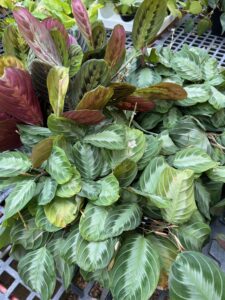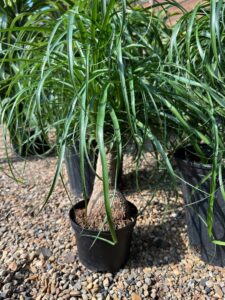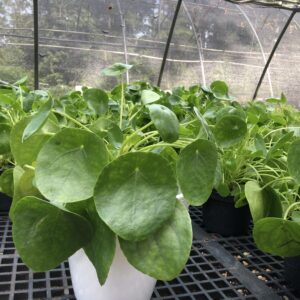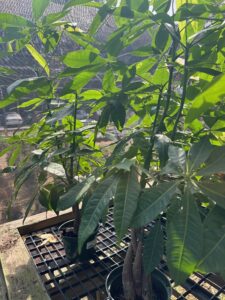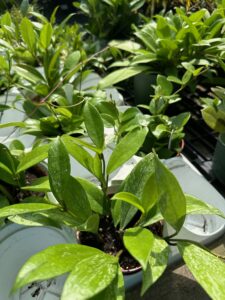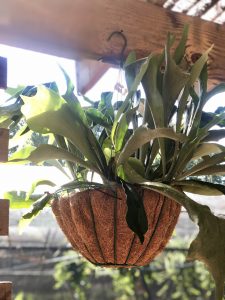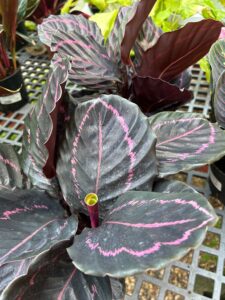Pet Friendly Houseplants; Green Companions for Your Furry Friends!
Bringing houseplants into your home offers more than just stylish decor; they are also a soothing enhancement! Deciding which houseplant might work best in your space has an extra layer of difficulty when you have pets. Because many are toxic to our furry friends, it’s important to know what you can safely add to your home. We have a short list here but read to the end because we also have helpful links to double check other options.
It’s important to understand what we toxic means, in this context. Please note that this list has been compiled from the ASPCA lists (link at end of post), and as they note, ‘the consumption of any plant material may cause vomiting and gastrointestinal upset for dogs and cats. Plants listed as either non-toxic, or potentially toxic with mild GI upset as their symptoms are not expected to be life-threatening to your pets. If you believe that your animal is ill or may have ingested a poisonous substance, or if you have any further questions regarding the information contained in this database, contact either your local veterinarian or the APCC 24-hour emergency poison hotline at 1-888-426-4435.’
Several common houseplants to avoid include pothos, sansevieria, aloe, draceana, anthuriums, alocasia, aglaonema, diffenbachia, philodendrons, ZZ plants and monsteras. For a more comprehensive list, visit the ASPCA link below!
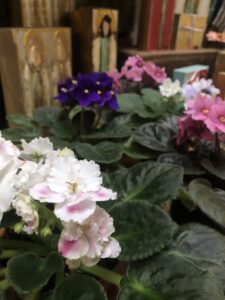
1 African Violet ( Saintpaulia)
This traditional favorite features thick furry leaves and colorful blooms (pictured above). Overall, this is an easy plant to grow; avoid placing in direct sun, bottom water to avoid getting water on leaves, and don’t keep too wet for best results. High humidity is good for this houseplant though, as is African violet food to keep it blooming. This is a good one to divide and share too!
2 Marantas
More commonly called Prayer Plant, these can be a little on the tricky side to grow. They are called Prayer Plants because of their sunlight -dependent movements. They like bright indirect light, and high humidity. Let the soil get dry halfway down before watering. Misting is helpful for these!
3 Ponytail Palm (Beaucarnea recurvata)
Also known by the scientific name Nolina recurvata, this popular houseplant features a large gray stem, fairly wide at the base, from which long blade looking leaves emerge. The blades are often curved; hence the species name. It’s also called Elephant Foot Tree. This is a tough houseplant, pretty vigorous and easy to grow. In its native environment, it can grow up to 30 feet tall!
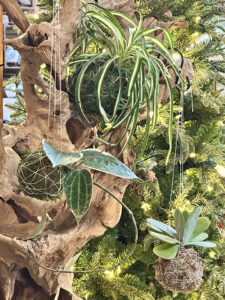
Spider plant (top) Hoya (bottom)
4 Spider Plant (Chlorophytum comosum or Anthericam comosum)
Airplane Plant is another name for this houseplant, which is often grown as a hanging plant. The most popular variety features long blades with white stripes, making it bright, cheerful and easily one of the most recognized houseplants! This one is safe for dogs but may attract cats. Cats may experience some hallucinations if they eat it, and may experience stomach issues. The ASPCA lists it as a non-toxic plant (see below), however, if you have a cat prone to eating your plants, you may want to avoid this one.
5 Boston Fern (Nephrolepis exaltata ‘Bostoniensis’)
This is likely the most popular fern around! Boston ferns feature graceful fronds that move in the breeze. We usually see it outside during our warm seasons but if you have a bright space with high humidity, you can try to bring it in and overwinter. Don’t be too surprised if it loses foliage; they don’t usually do great with heating systems in the winter. Be sure to mist often to help with that and place it away from vents.
6 Chinese Money Plant (Pilea peperomioides)
Flying Saucer Plant and UFO Plant are alternate names for this easy care houseplant because the round leaves float on thin stem. Avoid over-watering, place in bright, indirect light and turn every few weeks for even growth. The UFO Plant sprouts little baby plants that can be divided off and given to friends… and guess what? These little plant babies are called ‘pups’!
7 Money Tree (Pachira aquatica)
If you find one of these, keep it around for good luck! Legend has it that good fortune comes to those who share space with a Money Tree. This houseplants is also resilient, fast-growing and has a tree-like form, making it unique among pet-friendly houseplants.
8 Hoya varieties
All of the hoyas have grown in popularity recently; shopping for the more elusive ones has become a past time of collectors! These can grow well in a lower light situation, although they will grow slower. With brighter light, the colors on the variegated varieties are more vivid, they will grow faster and also require more water. Overall, it’s a good idea to think of hoyas as succulents; their thick leaves store water similarly, and therefore, the plants require less water. Over-watering will result in issues so let the soil dry out between waterings.
9 Staghorn Fern
This may be our favorite. Well, we have lots of favorites but it makes the list! Staghorn Ferns are native to Australia, and feature two kinds of fronds. The fronds at the base cover the soil, container or wood plank the fern is in/ on, the other fronds are thick, antler shaped and covered in a gray, slightly fuzzy layer, especially newer fronds. Unlike many ferns, these prefer high light, would like to be kept on dry side. Water well, then let get on the dry side before watering again. The more humidity in your space, the less often you will need to water.
10 Calatheas
This beauty is a bit finicky. If you struggle with keeping houseplants happy, this may not be your next addition! They like just the right light (indirect light) and just the right soil moisture level (water when soil surface is dry). And they also like high humidity and regular houseplant fertilizer during the growing seasons.
Houseplant watering can take a minute to get in the hang of. There are all kinds of plants that can happily live indoors but the wrong amount of water can make things go sideways quickly. We suggest investing in a Moisture Meter; here is a link to more info on these helpful tools!
Visit ASPCA list for specific plants that ARE or ARE NOT toxic to cats and dogs. Here is the website, and below is an image of what you will find when you visit the link. You will be able to choose from lists of toxic plants for cats, dog, or horses, OR non-toxic plants for cats, dogs or horses. If you have both cats and dogs, be sure to cross reference. We love this link because it has images for each plant; very helpful. This is also a great reference for outdoor landscape plants at homes with horses as pets. Doesn’t really apply to this houseplant post unless you have an indoor horse like Mr. Ed!
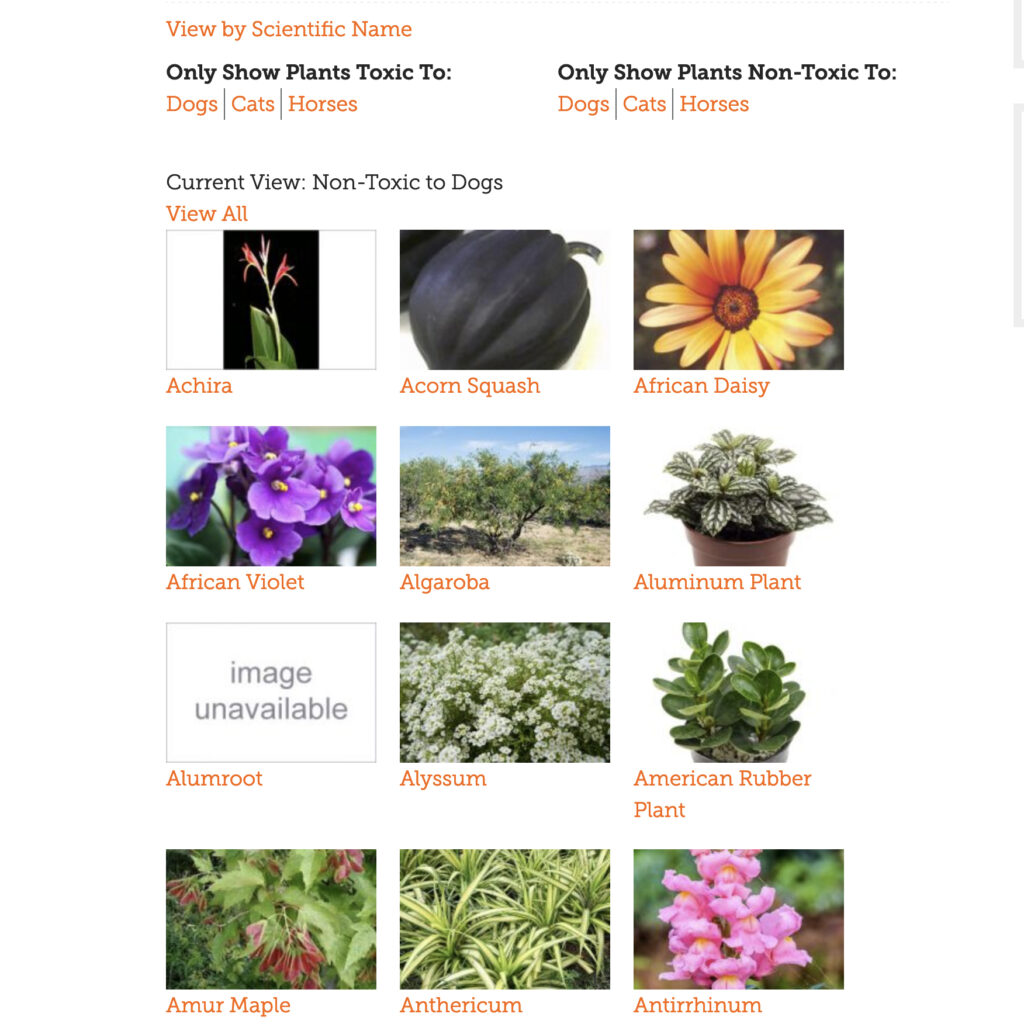
Adding houseplants to your home can enhance its beauty and improve air quality. By choosing pet-friendly varieties, you can ensure that your green space is safe for all members of your household. Happy planting!
